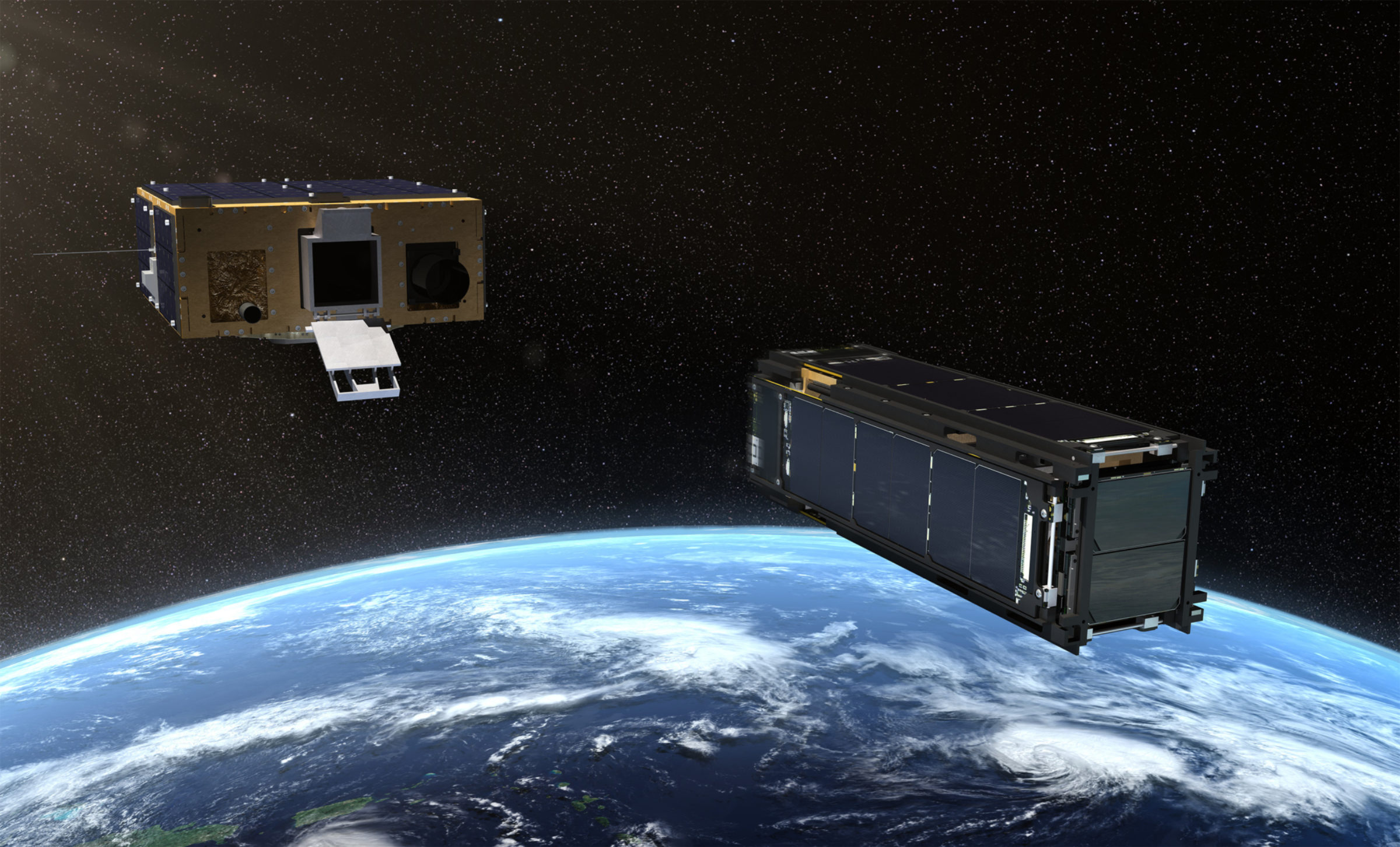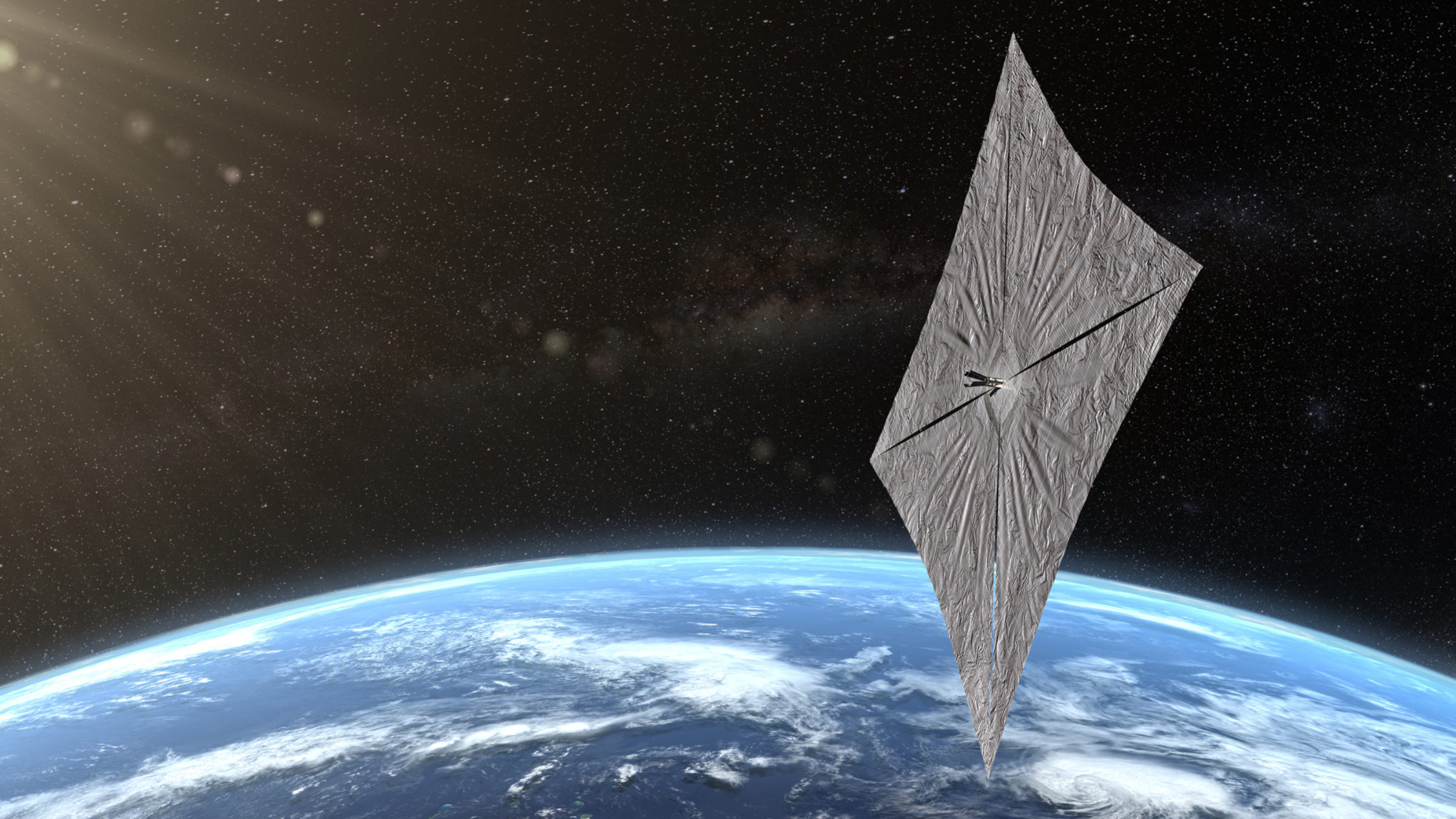Jason Davis • May 13, 2019
LightSail 2 set to launch next month aboard SpaceX Falcon Heavy rocket
The Planetary Society's LightSail 2 spacecraft is ready to embark on a challenging mission to demonstrate the power of sunlight for propulsion.
Weighing just 5 kilograms, the loaf-of-bread-sized spacecraft, known as a CubeSat, is scheduled to lift off on 22 June 2019 aboard a SpaceX Falcon Heavy rocket from Kennedy Space Center, Florida. Once in space, LightSail 2 will deploy a boxing ring-sized solar sail and attempt to raise its orbit using the gentle push from solar photons.
It's the culmination of a 10-year project with an origin story linked to the 3 scientist-engineers who founded The Planetary Society in 1980.
"Forty years ago, my professor Carl Sagan shared his dream of using solar sail spacecraft to explore the cosmos. The Planetary Society is realizing the dream," said Planetary Society CEO Bill Nye. "Thousands of people from all over the world came together and supported this mission. We couldn't have done it without them. Carl Sagan, and his colleagues Bruce Murray and Louis Friedman, created our organization to empower people everywhere to advance space science and exploration. We are go for launch!"
The Dream of Solar Sailing - LightSail 2 For centuries, people have dreamed of using solar sails to travel the cosmos. In 2019, The Planetary Society's LightSail 2 will help make that dream a reality by attempting the first, controlled solar sail flight in Earth orbit. The spacecraft was made possible thanks to the generous support of space enthusiasts from around the world.
LightSail, a Planetary Society solar sail spacecraft
LightSail is a citizen-funded project from The Planetary Society to send a small spacecraft, propelled solely by sunlight, to Earth orbit.
If successful, LightSail 2 will become the first spacecraft to raise its orbit around the Earth using sunlight. While light has no mass, it has momentum that can be transferred to other objects. A solar sail harnesses this momentum for propulsion. LightSail 2 will demonstrate the application of solar sailing for CubeSats, small, standardized spacecraft that have made spaceflight more affordable for academics, government organizations, and private institutions.
LightSail 2 will ride to space aboard the Department of Defense's Space Test Program-2 (STP-2) mission scheduled for launch on 22 June 2019, which will send 24 spacecraft to 3 different orbits. LightSail 2 itself will be enclosed within Prox-1, a Georgia Tech-designed spacecraft originally built to demonstrate close-encounter operations with other spacecraft. Prox-1 will deploy LightSail 2 seven days after launch.

After a few days of health and status checks, LightSail 2's 4 dual-sided solar panels will swing open. Roughly a day later, 4 metallic booms will unfurl 4 triangular Mylar sails from storage. The sails, which have a combined area of 32 square meters, will turn towards the Sun for half of each orbit, giving the spacecraft a tiny push no stronger than the weight of a paperclip. For about a month after sail deployment, this continual thrust should raise LightSail 2's orbit by a measurable amount.
The Planetary Society launched a nearly identical spacecraft called LightSail 1 in 2015 that successfully tested the spacecraft's sail deployment system. LightSail 2 will fly to an orbit 720 kilometers high, where the acceleration from sunlight overcomes atmospheric drag. The spacecraft may be visible in the night sky for a year to observers within 42 degrees of the equator, which includes the U.S. as far north as Chicago and New York.
The Society launched a larger sail named Cosmos 1 in 2005 that did not reach orbit after a failure of the spacecraft's Russian-built rocket. Planetary Society co-founder Louis Friedman led a 1970s NASA solar sail study that would have sent a spacecraft to rendezvous with Halley's Comet. Fellow Society co-founder Carl Sagan showed off a model of the spacecraft on The Tonight Show with Johnny Carson in 1976.
Results from the LightSail 2 mission are already helping to inform future solar sail projects by other organizations. NASA’s NEA Scout spacecraft will launch to the Moon aboard the first Space Launch System flight and use a solar sail to visit a near-Earth asteroid. The Planetary Society shares LightSail project data with NASA through a Space Act Agreement.

The LightSail project started in 2009. The spacecraft was built by Stellar Exploration, Inc. The lead contractor for integration and testing is Ecliptic Enterprises Corporation, with testing, storage and ground support provided by Cal Poly San Luis Obispo. Planetary Society Chief Scientist Bruce Betts serves as the LightSail program manager. The project manager and mission manager is Purdue University's David Spencer.
Support our core enterprises
Your support powers our mission to explore worlds, find life, and defend Earth. You make all the difference when you make a gift. Give today!
Donate

 Explore Worlds
Explore Worlds Find Life
Find Life Defend Earth
Defend Earth


